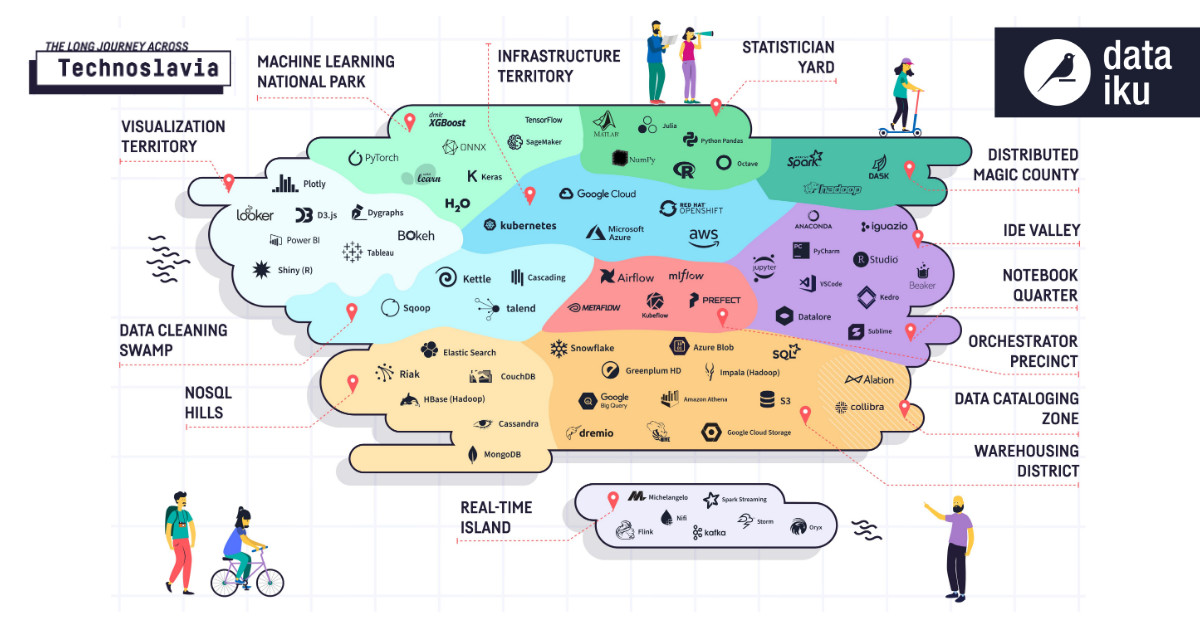What is an AI platform? And when looking to invest in an AI platform in today’s economic climate, what are the must-have features?
In their most basic form, AI platforms ease and govern the process of going from raw data to output, e.g., a machine learning model in production. Their overarching functionality allows people to:
- Use data to produce AI-driven solutions to business problems.
- Scale Enterprise AI efforts by providing transparency and reproducibility both at a macro scale (throughout the organization) and at a more micro scale (within a project).
- Govern Enterprise AI with all data access and work together in a central location.
Why Invest in an AI Platform
Ultimately, AI platforms are about time. That means time savings in all parts of the processes (from connecting to data to building machine learning models to deployment), of course. But it’s also about easing the burden of getting started in AI and allowing businesses to dive in and get started now — not waiting for years until technologies sure up and the world of AI becomes more clear (because spoiler alert: that may never happen). Essentially, they bridge the gaps of Technoslavia:
But why else does investing in an AI platform make sense?
- Ad-hoc methodology is unsustainable for large teams: Allowing employees — whether directly on the data team or not — to work ad hoc without a central tool is like a construction team trying to build a skyscraper without a central set of blueprints.
- Models need to be monitored and managed: The biggest difference between developing traditional software and developing machine learning models is maintenance. Even once performance is optimal, model performance can still shift over time as data changes, which is where robust MLOps processes come into play. Case in point for many companies early on in their AI journey: the 2020 health crisis, which rendered many AI systems useless without systems in place to update them.
- Analysts and data scientists need to work together: Analysts tend to work differently than data scientists, adept in spreadsheets and possibly SQL but usually not coding. Having a tool that allows each profile to leverage the tools with which (s)he is most comfortable allows for the scaling of Enterprise AI efforts.
What to Look For in an AI Platform
Robust AI platforms help organizations manage Enterprise AI strategy not just at the technological level, but at the people and operational level as well. This section details some specific features to look for in an AI platform in 2020 — leverage this AI platform RFP template for a more complete list.
Enables All People
- Allows contributions via code or through visual interface for analysts
- Facilitates faster data prep and allows analysts to do data preparation
- Allows multiple profiles to work together on different project components
With Seamless Technology
- Robust access controls and monitoring
- Data- and tool-agnostic integration
- One end-to-end tool that handles everything from raw data to deployment and monitoring
And Efficient Operations
- API-driven model deployment
- Allows for model deployment as a reproducible package
- Reusability and replicability of everything, from code to entire projects





